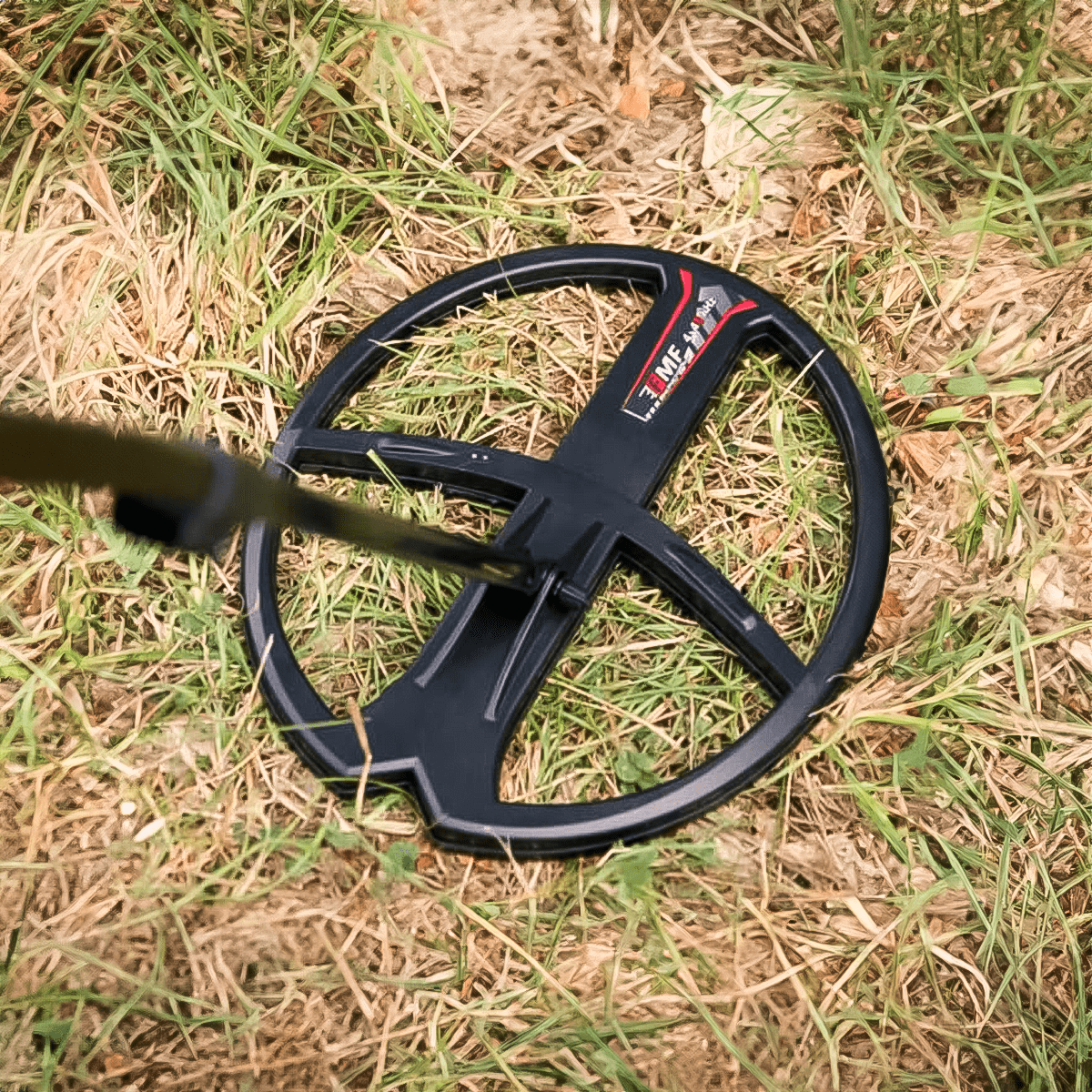
Different Types of Metal Detector Coils and How They Work
Different Types of Metal Detector Coils and How They Work
Ever wonder what a Double-D (DD) coil vs what a Monoloop coil does? Or perhaps what the difference is between Double-D and a Concentric Search Coil?
In this article we will break down all the major types of metal detector coils and what they do.
Let's Start With How Metal Detector Coils Work
A metal detector coil consists of copper wires wound in a circular or elliptical fashion and encased in a plastic shell.
Sometimes these wires overlap, as is the case with Double-D Coils, and sometimes they circle each other, as is the case with concentric coils.

One of the two wires transmits an electromagnetic field into the ground. As the coil passes over the ground it creates eddy currents in any metal targets, exciting the electrons of that target. The receiver wire then detects the electromagnetic field of that target.
(Below: an example of a Double-D coil arrangement)

The metal detectors processor then interprets the information recovered about the target, and converts it to Target ID numbers, sounds (tones), and sometimes other visuals that help the detectorist determine what the object might be.
(Below: Special imaging searchcoils are used for finding large obejects and caches. Note the special 3-coil arrangement)

Frequency
Some metal detector coils operate at single frequencies, and some on multiple frequencies, i.e. ‘multi-frequency’.
Multi-frequency modes are usually a proprietary combination of frequencies that the metal detector companies use in their machines.
If your machine has multiple ‘multi-frequency’ modes, that means that some of those modes are designed with higher, or lower frequency combinations and suited to specific detecting environments.
(Below: The Nokta Legend is a 'Multi-Frequency' Detector)

In general higher frequencies are more sensitive to smaller or shallower targets, while lower frequencies will be better for detecting deeper targets.
Be wary of some single-frequency detectors–especially those without ground balance or automatic ground tracking. These detectors will usually not perform well in wet beach sand, saltwater, or heavily mineralized soil.
Single-frequency Garrett metal detectors for instance give off false signals in wet beach sand or salt water environments.
Surprisingly, the Minelab X-Terra Pro has three single frequencies you can select from, and does just fine on wet beach sand and salt water.

What is the Best Metal Detector Coil Size?
Larger coils can go deeper, and cover more ground. However, they are more susceptible to EMI and less sensitive to small targets. Large search coils are also heavier.
(Below: Note the difference in the depth footprint of a larger vs smaller coil)

Smaller coils are more sensitive to smaller, shallow targets, and less susceptible to EMI. They are also excellent for target separation and getting into tight areas. Smaller coils are usually very light and easy to swing.
In my personal experience, I have found silver dimes with a 15” inch coil I missed with my 11” stock coils. It is always important to grid an area, and turn 90-degrees to your suspected targets while you sweep over it, otherwise it doesn’t matter what coil you have you still might miss something.
If you have a backyard, make a test-garden, it is invaluable for helping you learn your machine. Keep in mind objects buried for a length of time will behave very differently than freshly buried objects, or air tests.
What is the Best Shaped Coil for Metal Detecting?
Coil Shape can also affect performance. Different coil shapes alter the magnetic field transmitted by the coil. Circular coils are the most stable and best performing.
Other shapes, like elliptical coils for instance, are good for getting into tight areas. While open-web coils can help reduce weight, and water drag when water detecting.
Concentric Coils

Concentric coils are shaped like a bullseye, with the transmit wire around the outside and the receive wire around the inner circle.
The Concentric coil’s footprint, or transmission beam extends into the ground in a cone-shape. Unfortunately the cone-shaped nature of the footprint requires the detectorist to overlap their sweep by at least 60%.
However, the Concentric coil does tend to be the most accurate when pinpointing targets.

Double-D Coils

The Double-D configuration has overlapping transmit and receive wires that create “D”-shapes facing away from one another.
The footprint of the Double-D can be imagined as blade-shaped and allows for excellent target separation, stability in EMI, and greater depth while only requiring you to overlap your sweeps by 30%.
The ‘blade’ analogy is a bit of a stretch, if we are being serious. With some testing, you will find that the detection field of the coil does in fact bulge out to some degree. However, the detector settings suppress this field to some extent, making it seem more precise and blade-like.
(Below: the open-web design of the Minelab Manticore DD Coil)

Turning around your target while sweeping over it may help you better understand what is under your coil, in case there is more than one target there.
Be wary of shallow targets. All you have to do is test a target up close to realize Double-D coils do strange things when targets are too close. Sometimes you will get a stutter to your signal like a loud double/triple beep sound. Or you may get signal skipping.
The Double-D coil is the king of ground balancing in heavily mineralized soil, or salt-water conditions. However, be wary of single frequency detectors when dealing with wet sand and salt water.
Monoloop Coils
Monoloop coils are only compatible with Pulse-Induction Metal detectors (PI’s).
(Below: The GPX 6000 is one of the best Pulse Detectors on the market for gold prospecting, note the 11-inch Monoloop coil on it)

The Monoloop coil has a single winding around the perimeter that both transmits and receives signals by alternating them. Pulse Induction Detectors send out quick powerful pulses or bursts of current that create short-lived magnetic fields.
Because of the coil configuration you can pinpoint with the edge of a Monoloop coil.
The footprint of the Monoloop is a large cone-shape that achieves the best depth–better than Double-D coils.
However, the Monoloop still struggles with heavy mineralization, EMI, and requires you to overlap your sweep by at least 60% due to the shape of the footprint.
Smart Coils
Some coils, like those of the XP-Deus family, are wireless and have built in Lithium Ion batteries. These coils have the processor built into them, and have the capacity to change frequencies.
(Below: The XP Deus 2 13-Inch Smart Coil)

Wherein most detectors the control box is where the processor is located, in XP detectors the coil is where the brains of the detector are stored.
The coil transmits all of the details to the Remote Control Display unit where the Detectorist can see all of the information (Target ID, tones, etc.).
In other words, the Remote Control is only a monitor, whereas the coil is where the main computer is located–hence “Smart Coil”.

